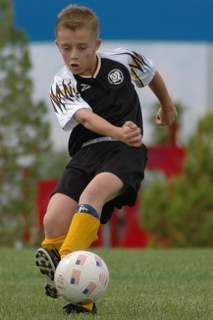Okay, so I wrote the other day that a properly exposed photograph depends upon three adjustable things: aperture, sensor or film sensitivity to light (called ISO or film (sensor) speed), and shutter speed. Today's tip deals with the last of these-- the amount of time that the shutter is open allowing light to stream to the sensor or the film.
Like aperture, the shutter speed you (or your camera) select determines a proper exposure, but it also helps create some of the effects that you've seen in photographs you admire. Maybe you've even hoped to achieve similar effects. Let's talk about how to do that. But first a note about getting the shot at all.
Shutter speed is generally measured in fractions of a second. Most modern cameras have shutter speeds settings from 1 sec to 1/1000 of a second, or faster (we'll deal with the "B" or "bulb" setting in another tip). As I mentioned above, the shutter speed is an indication of how long the shutter is open, allowing light through the aperture. One of the ways, beyond proper exposure, that this number matters has to do with how long the human body can hold really, really still. It might surprise you to learn that we humans aren't really built to hold that still. As the living, breathing organisms that we are, we tend to be always in motion at least a little bit. Try an experiment. Try sitting rock still and then notice how much is really going on in your body. Even when you are trying to be motionless, you are still breathing, your heart is still beating, your muscles are still moving--albeit slightly--to keep you upright. All of these motions contribute to humans not being very good tripods (and though we are technically bipods (or bipeds, or whatever ;-) ), we just don't hold still that well-- at least in terms of what a camera sometimes needs).
If you take notice of how much you move in a second, you might realize that a frame of film or a digital sensor would detect that motion. As hard as we try, most humans can't hold still enough to avoid moving the camera enough to blur a picture taken at about 1/30 of second or slower. As a result, you should try to keep your shutter speed above that number when hand holding your camera. At shutter speeds of 1/60 of a second or faster, the shutter is open so briefly that a little tremor by the photographer will go unnoticed. So, keep your shutter speed above 1/30 most of the time.
What does shutter speed for the image itself, then? The main thing is, of course, that it stops the action-- or doesn't. Take a look at these two images.


The first image depends upon a fast shutter speed to stop the action. Even a sprinting soccer player or a ball that has just been blasted by the kicker can't move very far in 1/1000th of a second. (In this case, the shutter speed was 1/640 and the aperture was f5.6, 300mm lens.)
The second image relies upon a slow shutter speed to give a soft, ethereal quality to the water. This shutter speed was just 1/3rd of a second (f8, 170mm lens). Pretty slow. The water flowing across the rocks becomes blurred and smoothed.
To get your camera to achieve such effects, use the shutter priority mode. That is to say, you select the shutter speed and the camera selects an appropriate aperture (f-stop) if it can. The "sports" mode is essentially a shutter-priority mode that is biased towards faster shutter speeds. A landscape mode, on the other hand, is an aperture-priority mode that favors small apertures (higher f-numbers) to achieve a greater depth of field.



No comments:
Post a Comment